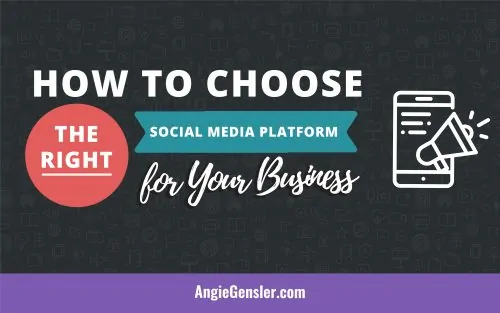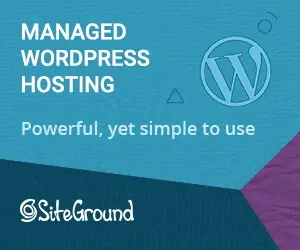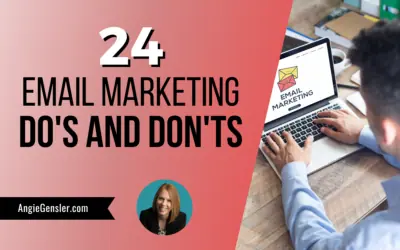Email marketing is a powerful tool for reaching your customers directly and generating sales for your business.
But let’s face it, there are a lot of myths floating around the email marketing world that can really throw a wrench in your plans.
These myths aren’t just misleading—they can actually mess up your email campaigns and hurt your results.
If you want to nail your email marketing strategy and get the best results, kicking these myths to the curb is a great first step.

In this article, we’re going to tackle some of the most common email marketing myths that could be holding you back.
We’ll bust each myth wide open with some real truths, loaded with actionable tips.
Whether you’re an email marketer or a small business owner just dipping your toes into email marketing, you’ll find plenty here to steer clear of the usual traps and make your marketing emails shine.
Get ready to learn the best practices for building a list of engaged subscribers, crafting compelling email subject lines, and driving your business forward with smarter email tactics.
You’ll come away with a whole new toolkit for better, bolder email marketing.
Myth #1 – More Emails Equals More Success
While it might seem intuitive to think more emails would lead to more engagement, focusing solely on the frequency of emails can lead to diminishing returns.
Sure, it’s tempting to stay on your subscribers’ minds, but increasing email frequency can often backfire, especially if you send marketing emails at the wrong time or on the wrong days of the week.
Research shows that finding the best time and optimal send times can significantly impact your click-through rates and overall email engagement.
That’s because bombarding your audience can lead to increased unsubscribe rates.
Who hasn’t gotten one too many emails from a business and finally hit that unsubscribe button? You’re experiencing subscriber fatigue, which leads to higher opt-out rates.
This myth operates on the assumption that more communication naturally leads to better results. However, the key is actually in the value each email offers.

The Truth – Focus On Value Rather Than Volume
Instead of bombarding your audience, focus on sending valuable and relevant content.
You want the focus to be on crafting valuable content that resonates with your subscribers. Timing and relevance of the messages also matter.
The best way to find your sweet spot is to test different frequencies and monitor your engagement rates.
Using A/B testing can help you determine the right time to send your emails for the best results.
Remember, it’s not just about how many emails you send but also about the value each email provides to your target audience.
Find a cadence that works for your audience, ideally somewhere between 1 – 2 emails a week.
Concentrate on delivering meaningful content that provides real benefits to your subscribers, ensuring each communication adds value.
If your emails are valuable, your subscribers are more likely to stick around.
Myth #2 – Buy Email Lists To Quickly Grow Your Subscriber Base
Although buying email lists might appear as a shortcut to expanding your audience, doing so often compromises the quality of your subscriber base.
Recipients from purchased lists are typically less engaged because they haven’t voluntarily signed up to receive communications from you, leading to lower open rates and higher spam complaints.
Purchasing email lists might give you quantity but not quality. This method not only harms your brand’s reputation but also violates principles of consent under regulations like GDPR.
All of this affects your deliverability and sender reputation.

The Truth – Build Your List Organically For Better Long-Term Results.
Why waste money on emails that are just going to be marked as spam and affect your analytics? You want people on your email list who want to hear from you.
Building an organic list of engaged subscribers yields better long-term results.
Organic growth, though slower, ensures a more engaged audience that is interested in what you have to say. These are the more committed subscribers who are genuinely interested in your brand.
So, how do you build organically? Try a lead magnet, a newsletter opt-in pop-up box on your website, or another way to drive traffic to your email list.
If you need help creating a lead magnet that converts, read 60 Lead Magnet Ideas to Grow Your Email List.
Myth #3 – Email Marketing Is Dead. Focus on Social Media
Social media is great, and it has its place, but unlike email, where you directly own your contact list, social media platforms control access to your followers.
Due to the algorithms these platforms use, it’s possible that only about 2% of your social media followers will see your posts at any given time.
This means your messages might not reach your audience unless the algorithm favors you that day.
On top of that, what would happen if Facebook or Instagram shut down tomorrow?
All of your followers on those channels would be gone, and your source of leads would dry up instantly.

The Truth – Email Marketing Remains One Of The Most Effective Channels To Reach Your Audience
I’m not saying social media isn’t great or important (we all know I love it!). But email marketing continues to be one of the most effective ways to connect with your customers.
With email, you own your contacts and distribution, which means your message can potentially reach 20-50% of your audience, compared to just 2% on social media.
It offers a direct line of communication and generally sees higher conversion rates.
Email marketing also has unique advantages over social media, like personalization and a controlled environment for delivering targeted messages directly to your audience.
Plus, emails aren’t affected by algorithm changes, providing a stable platform for reaching your customers.
Additionally, email marketing typically has a higher ROI than other channels, proving its ongoing relevance.
Myth #4 – Subject Lines Don’t Matter Much
Subject lines are the first impression of your email. They are the gatekeepers of your emails and help tell the reader what to expect when they open emails.
Your email subject line can make or break whether a subscriber decides to open your message.
A lackluster subject line might mean your email gets overlooked. A spammy one might persuade someone to mark your emails as spam. A misleading one may make a reader unsubscribe.

The Truth – Subject Lines Significantly Impact Email Open Rates
Crafting compelling subject lines that grab attention and accurately reflect your email content is crucial for success.
Effective subject lines often include a sense of urgency, curiosity, or personalization that speaks directly to the recipient’s interests or needs.
Your subject line determines whether your email is opened or ignored.
To find out what resonates best with your audience, conduct A/B tests on different subject lines.
Spend time crafting subject lines that intrigue and invite your readers. To avoid being marked as spam, try different hooks that reflect the content within.
For help writing subject lines that capture attention, read 150 Power Words to Increase Engagement and Clicks.
Myth #5 – Email Marketing Is Only For Sales And Promotions
Many people are suspicious of email marketing because of this myth.
Larger companies might send out numerous sales and promotional emails, but this approach can backfire, especially for small businesses.
Not every email subscriber will become a customer instantly.
If you only send promo emails, they will likely unsubscribe, and you may lose them forever.
Research shows that the average person receives 121 emails each day. In such a crowded inbox, your emails need to stand out with content that offers real value.
This is especially true for the younger generation, who are looking for more than just sales pitches.

The Truth – Use Email Marketing to Provide Value and Build Relationships
Instead of bombarding your subscribers with constant sales pitches, provide value and nurture your relationship with them.
The best practices involve mixing up your content with valuable information that engages and nurtures your audience over time.
Ditch the short-term instant sale mindset for long-term relationships, growth, and results.
Welcome emails, newsletters, and educational content can help build a loyal customer base and increase your engagement rates.
Share valuable content, offer free resources, and provide exclusive access that aligns with their interests and needs.
By providing valuable content, you can keep your subscribers interested and build long-term relationships that drive growth and results.
This not only keeps them engaged but also establishes your brand as a trusted authority.
Someone who doesn’t become a customer today might become one a year from now, and they could also recommend you to others in the meantime.
Myth #6 – Email Marketing Is Spammy And Annoying
Many people believe that email marketing is inherently spammy and annoying, stemming from poorly targeted or excessive email campaigns.
When email marketing is done poorly, it can indeed come across as intrusive and unwelcome, leading to unsubscribes and a negative perception of your brand.
When done right, however, email marketing can be a highly effective way to connect with your audience.
Effective email marketing is all about permission and relevance.
When subscribers opt-in to receive your emails and you provide content that is valuable and pertinent to their interests, email marketing becomes a powerful and appreciated tool.
This is also why legal standards like GDPR have been established. They give the recipient more control over what they see.

The Truth – Email Marketing Is Welcomed When Done Right
Effective email marketing is all about permission and relevance.
When subscribers opt-in to receive your emails and you provide content that is valuable and pertinent to their interests, email marketing becomes a powerful and appreciated tool.
To ensure your emails are well-received, always use permission-based marketing, ensuring that subscribers have actively opted in.
Focus on delivering content that is relevant and valuable to your audience, such as industry insights, helpful tips, exclusive offers, and engaging stories.
Find the right balance in your email frequency to avoid overwhelming or under-communicating with your audience.
And always include an easy and clear option to unsubscribe, respecting your subscribers’ choices and maintaining a clean and engaged list.
This approach not only enhances your brand reputation but also builds stronger, more loyal relationships with your subscribers.
Myth #7 – Quantity Of Subscribers Matters More Than Quality
There was a time when high subscriber numbers were a point of pride. The ‘more, the better’ mentality drove the old days of email marketing.
However, focusing solely on the number of subscribers misses the mark.
Treating all subscribers the same is a missed opportunity for segmentation and personalization. Not all subscribers will engage with your content equally.
The value of an email list is not in its size but in its engagement.

The Truth – Engaged subscribers are more valuable.
Quality subscribers who are genuinely interested in your content and offerings are more valuable than a large but unengaged list.
Engaged subscribers who interact with your content are more likely to convert and become loyal customers.
Additionally, engaged readers are more likely to tell others about you, further expanding your reach through word-of-mouth.
Focus on building a quality list through targeted opt-in strategies.
Recognize your audience’s different behaviors and preferences, and tailor your emails to match their specific interests.
This approach increases the relevance and effectiveness of your campaigns, ensuring that your emails resonate with your audience and drive better results.
Myth #8 – Visual Design is the Determining Factor for Success
Everyone likes pretty things. And some of us, myself included, love the design process.
But there’s a time and a place for a good design.
It’s a myth that designing visually appealing emails is the most important aspect of your email marketing.
While good design can enhance readability and make your emails more attractive, it’s the content and its relevance that truly drive action.
Attractive design can help engage readers, but without valuable and relevant content, even the most beautiful emails will not perform well.
Additionally, overly designed emails can trigger spam filters, preventing your message from reaching your audience.
In the end, substance matters more than style.

The Truth – Content Is King
While a visually appealing email can attract attention, content remains king.
It’s kind of like finding a perfectly shaped piece of fruit. All that perfection isn’t going to matter if it’s rotten inside.
Instead, focus on delivering valuable content that resonates with your audience, regardless of design complexity.
Your message should be clear and provide value, whether it’s in plain text or a beautifully designed template.
Your emails should also be easy to understand and act upon.
Remember, many people quickly scan emails, so prioritize clarity and conciseness over elaborate designs that might slow down loading times, trigger spam filters, or distract from the message.
Myth #9 – Email Marketing Is A One-Size-Fits-All Approach
If a one-size-fits-all approach worked, we’d all be happy with how our clothes fit. It wouldn’t matter who we bought from because everything – and everyone – would be equal.
A strategy that treats all subscribers the same is likely to miss opportunities for engagement.
The truth is, we aren’t all the same. We have different needs, and businesses that understand this can benefit from taking a different approach.

The Truth – Personalizing Your Emails Leads To Higher Engagement
Everyone wants to feel special, and that’s why personalization and segmentation are key to successful email marketing.
Tailoring content to specific audience segments based on demographics, behaviors, and interests leads to higher engagement and conversions.
It also leads to better customer loyalty and satisfaction.
By personalizing your email messages, you address individual customer journeys and preferences, enhancing the effectiveness of your email campaigns.
Myth #10 – Email Marketing Is A Set-It-And-Forget-It Strategy
The landscape of digital marketing is constantly evolving, so why do some people think that email marketing is a one-and-done strategy?
Sure, it might be an easy option. Set up your email sequences, auto-responders, and opt-in forms, and then you’re good to go.
Not quite. What happens if you realize you aren’t gaining subscribers or your numbers are dropping lately? Or your lead magnet is failing to convert?
Is it okay to email your subscribers and hope it leads to sales and conversions?
If you’re looking to improve your marketing performance, you need the truth.

The Truth – Review Your Strategy Regularly To Improve Performance
Successful email marketing requires ongoing attention and adaptation.
It requires staying up-to-date on the newest trends and technologies, and regular optimization, testing, and analysis.
That’s because market trends, customer preferences, and technological advancements can all influence the effectiveness of your email campaigns.
A small business owner needs to continuously adjust their email marketing strategy.
This proactive approach can greatly enhance your email effectiveness over time and ensure that your strategy remains dynamic and successful.
It is important to regularly analyze your campaigns’ performance and adapt based on your data.
Test different elements of your emails and adjust your strategy based on the results to improve performance.
Conclusion
Remember, effective email marketing is about more than just the number of emails you send or the size of your subscriber list.
It’s about delivering value, nurturing relationships, and continuously optimizing your approach based on data and feedback.
By focusing on quality over quantity, personalizing your messages, and staying adaptable, you can create email campaigns that resonate with your audience and deliver long-term success.
With these insights, you’re equipped with a new toolkit for better, bolder email marketing that will help you achieve your goals and exceed your expectations.
By understanding and applying these truths, you can dispel common myths and optimize your email marketing strategy for better results.
Infographic




















